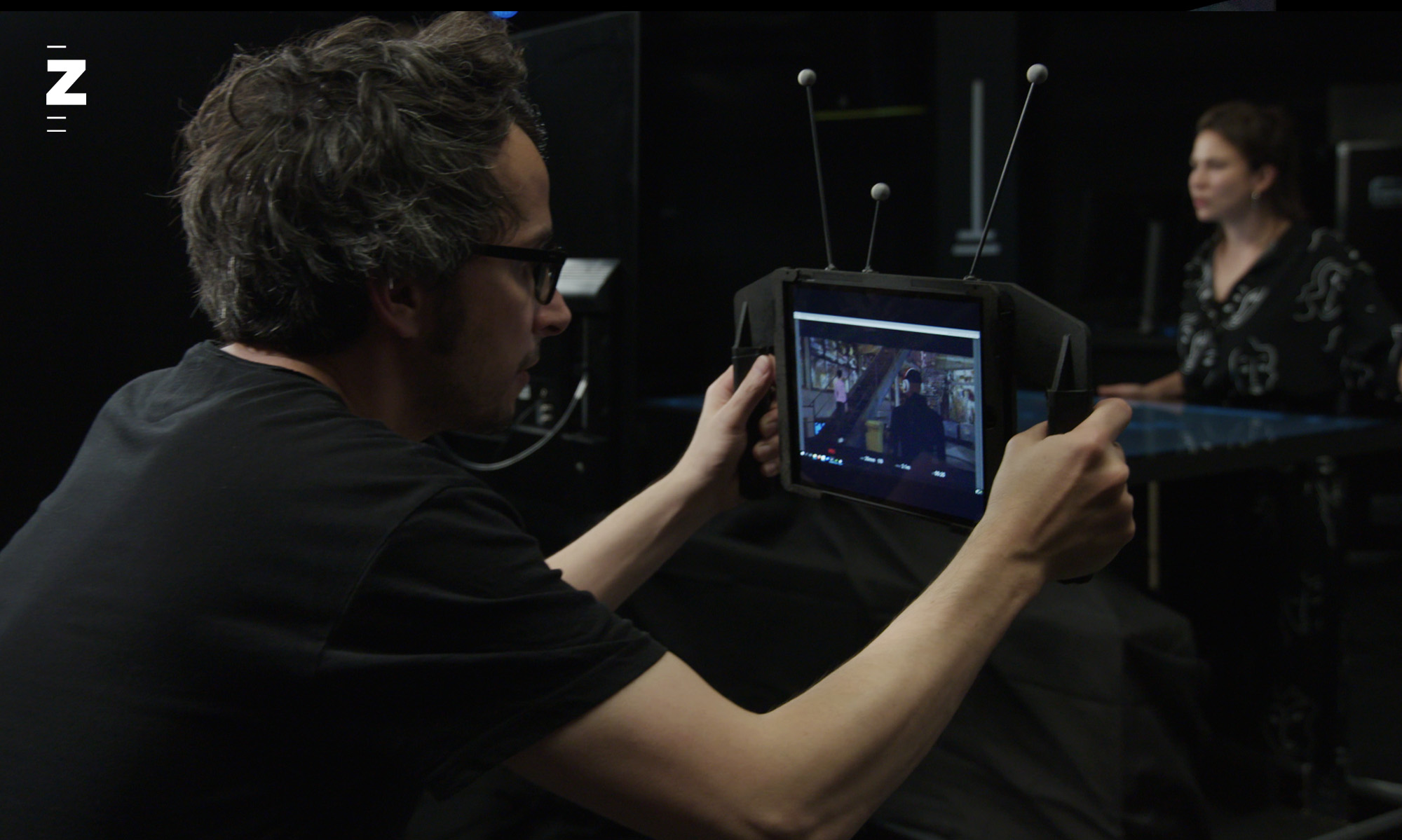The event took place on 4th May 2023 in the Immersive Arts Space.
Find out more about the LabInsights.
Luzifers Traum
Graduation performance by Arianna Congedi, that took place on 16th June 2023 in the Immersive Arts Space.
DERIVA – Performance
The performance by Joaquina Salgado took place on 28th April 2023 in the Immersive Arts Space.
Talk/workshop Jayachandran Palazhy
Tuesday, 12th September 2023 | 18:15-19:30
Immersive Arts Space (1.J30)
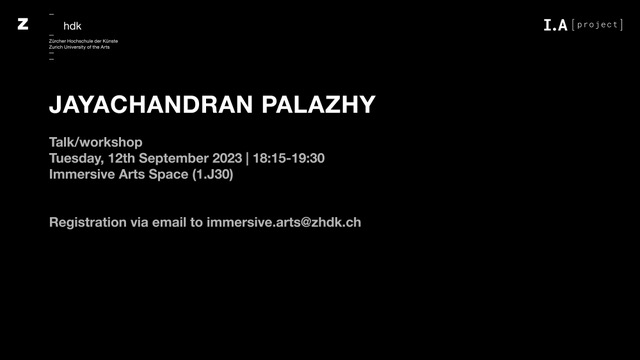
Jay Palazhy, founder and artistic director of the internationally renowned Attakkalari Centre for Movement Arts from Banaglore/India, is visiting the Zurich Unversity of the Arts and will hold a talk/workshop in the Immersive Arts Space on Tuesday, 12 September. He will give theoretical and possibly practical insights into his work and the Attakkalari Centre.
Please, register via email at immersive.arts@zhdk.ch
Places are limited.
Further Infos: https://attakkalari.org
ThREE
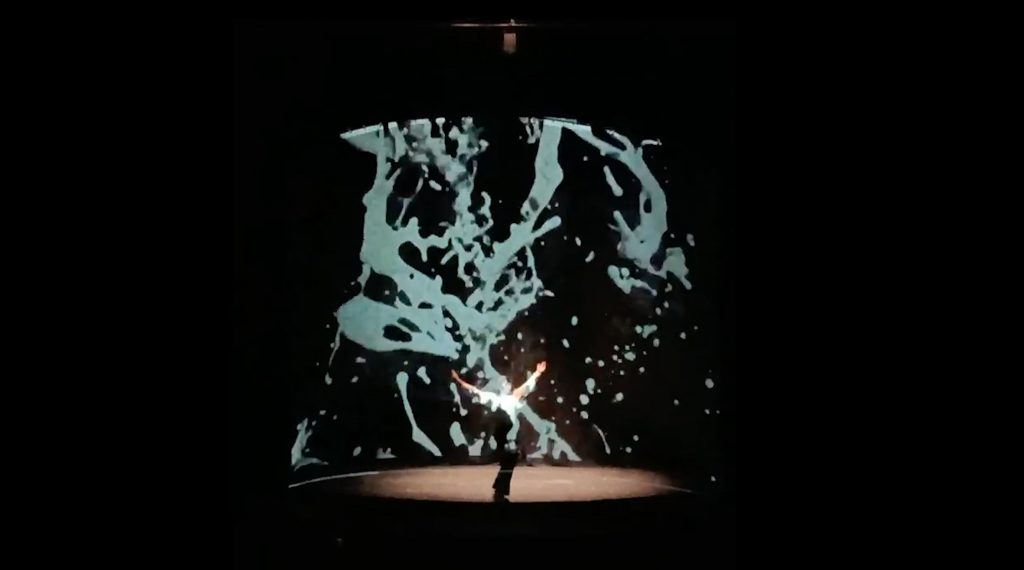
ThREE is a dance piece by the choreographer Stefanie Inhelder (Company glitch) and developed within the residency hosted by the Institute for Computer Music and Sound Technology (ICST) and the Immersive Arts Space.
Abstract:
Three generations ago, Switzerland colonized Indonesia. Not only the country, but also the”women”. As a descendant of colonial concubinage, the choreographer Stefanie Inhelder carries both sides within herself.
The audience is invited to dive into the sea between the fronts. In this in-between space we fathom the paradoxes that our ancestors have left us. Five performers move into the present with a minimalist core. Arrived we let the clear lines flow in a liquid polyphony – a decolonization of the feminine connotated body.
ThREE is an immersive piece, that embraces the audience with an octophonic soundscape and holographic visuals. Through motion capture technology, the dancers’ movements expand throughout the theater auditorium. ThREE invites the audience to let go of clear sight and sides to find ourselves in the space between.
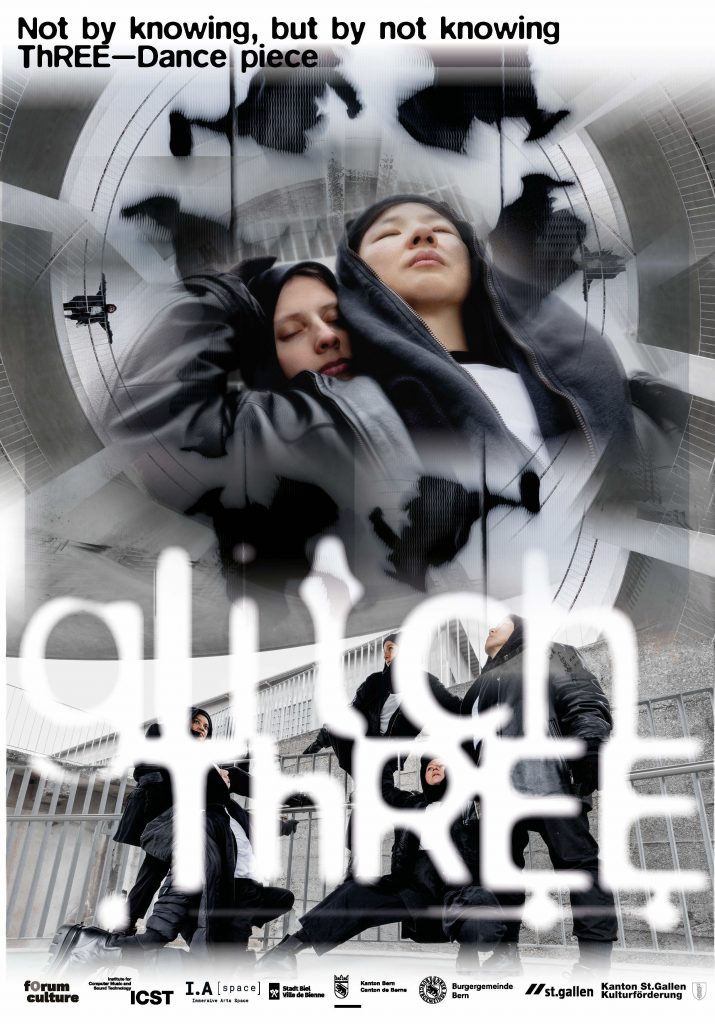
Credits:
Stefanie Inhelder – artistic director, choreography
Javier Munoz Bravo – composition and live electronics
Stella Speziali (IAS)- visuals
Eric Larrieux (IAS) – motion capture
Anna Heinimann – performing dancer
Kuan-Ling Tsai – performing dancer
Laetitia Kohler – performing dancer
Pascale Altenburger – performing dancer
Thea Soti – performing dancer
Jiaxin Chen – dramaturgy
Andreas Zangger – historical research
Lena Schmid – scenography, costumes
Daniel Tschanz – light design
Camille Jamet – production
reconFIGURE@DA-Z
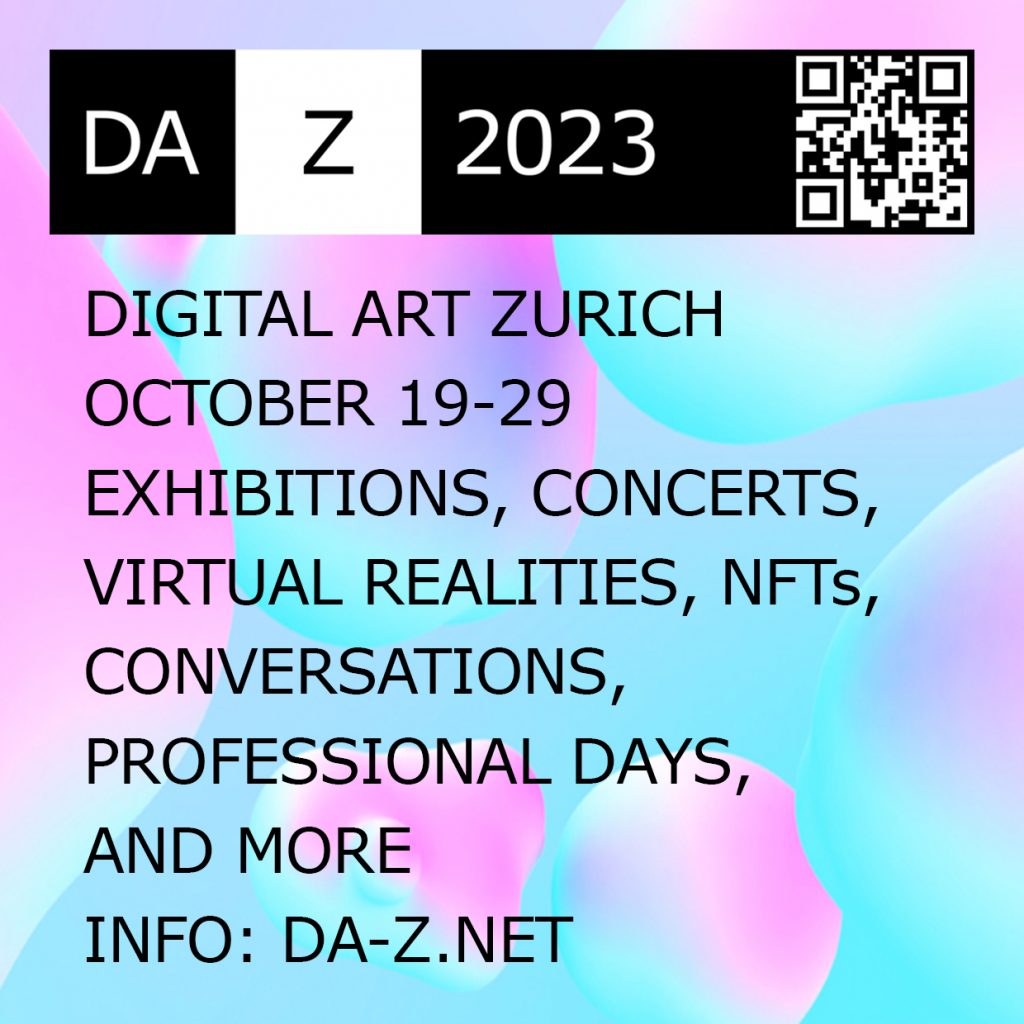
reconFIGURE in an ongoing research project and offers an insight into a re-imagination of our world, the human body and movement by AI. Do we lose control over our represenation? The project aims to discover and highlight the shift of our images and embodiement once they are captured via computer generated data.
reconFIGURE will be shown during this year`s Digital Art Zurich (DA-Z).
Tickets can be purchased [here].
Entrance is free for ZHdK students and employees.
Opening hours:
25th to 29th October 2023 | 15:00-19:00 £
Immersive Arts Space (1.J30), entrance via film gate (Förrlibuckstrasse)
afterdust // afterglow
Performance, 22nd September 2023 | 19:00
Immersive Arts Space (1.J30)
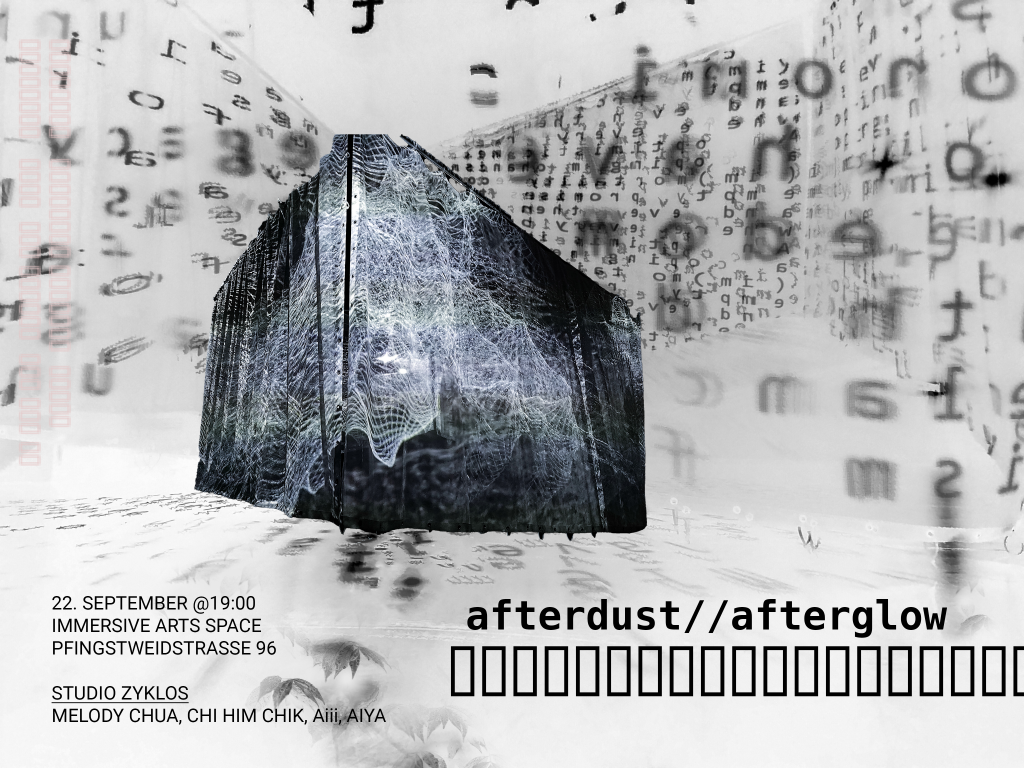
The phenomenon of phantom pain is when an individual experiences pain to a limb or an organ that is not physically part of the individual’s body, but perhaps once was and was removed—or was never even there in the first place.
In a radical empathy–turned hallucination, afterdust//afterglow makes allusions to the coping rituals we create around phantom pain, mourning, and death—the literal and the metaphorical, the overlooked witherings that occur within and between us and those right in front of us. Bright, blinding eulogies amidst unwavering resilience. It is the obsession of revisiting a memory in an attempt to find more life inside of it—even as we distort the memory with each access, and these distortions become our truths.
Concept/sound/visual composition/performance by STUDIO ZYKLOS (Melody Chua, Chi Him Chik, Aiii, AIYA)
Please register [here]
reconFIGURE
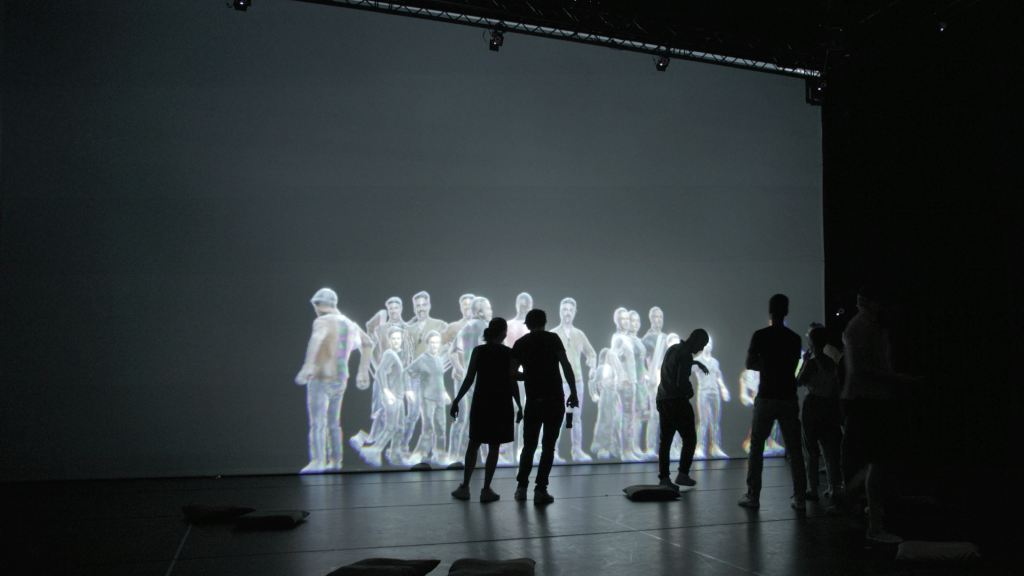
reconFIGURE is a real time installation exploring how diverse human bodies are reimagined by computing machines. The visitors’ frontal image is first captured by a camera, and using machine learning, transformed from a 2D image into an animated 3D avatar in a matter of seconds. Appearing in the projection on the wall and an unsettling sonic atmosphere, these doppelgaengers gradually seem to move like strange creatures in an aquarium, where hidden forces throw them around like rag dolls. As the visitors’ encounter their re-animated selves on the screens, they bear witness to the mutations generated by the machine processes. Thus, through the transformation of bodies by way of increasingly black boxed AI systems, reconFIGURE probes how we will negotiate the truth between our own image and that image as reimagined by machines.
reconFIGURE probes how computational systems capture, represent and transform human bodies [Hansen 20121; Hayles 20002]. In art theory and criticism, this theme has long been examined through concepts such as “technical exteriorisation” [Wegenstein 2010] and the “cyborg” [Haraway 20133]; “data bodies” [Salazar 20234]; and (3) the “undigital image” where a disconnect is felt between a subject and their body through computational image making [Zylinska 20205]. At the same time, the tension between a body and its captured other marks reconFIGURE as an encounter with digital “doppelgängers.” A term originally used by 18th century German writer Jean Paul, the doppelgänger is a ghostly counterpart for a living person, seen as an omen or sign of death
Aesthetically, reconFIGURE aims to highlight exactely this uncanny situation – the unsettling feeling that feels oddly familiar [Freud 2017]6 when confronting a digital other. To achieve this, we structure the experience in two parts: First, capture and transformation of the visitors’ body image and second, the reanimation of the image in an audio-visual environment that evokes the sense of bodies suspended in outer space or a liminal zone between life and death. This confrontation with one’s doppelgänger has an intimate quality yet, the doppelgänger quickly disappears from the display, reappearing in a larger projection in the room.
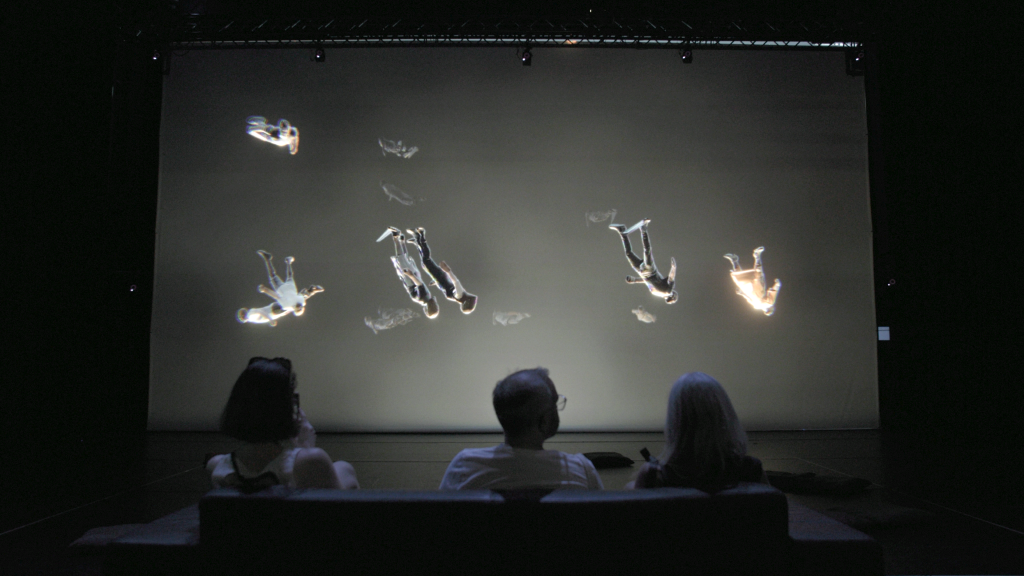
reconFIGRUE has already been part of the following exhibitions, conferences and festivals:
Exhibitions:
Museo de Arte Lima (MALI) (May-Sept 2025)
Festivals and Conferences:
ISEA Conference (Seoul, May 2025)
Kikk Festival (Namur, October 2024)
MEET | Digital Culture Center (Milan, May/June 2024)
Grand Palais Immersif (Paris, May 2024)
Teatros del Canal (Madrid, May 2024)
Digital Arts Zurich (DA-Z) (Zurich, October 2023)
Zurich Art Weekend (Zurich, June 2023)
Ars Electronica (Linz, September 2023)
Credits:
Chris Elvis Leisi: Experience Animation
Florian Bruggisser: Volumetric Capturing, Machine Learning
Pascal Lund-Jensen: Sound Design
Martin Fröhlich: Scenography
Chris Salter: Project lead
Kristina Jungic: Exhibition Production
- Mark N.B. Hansen (2012). Bodies in Code: Interfaces with digital media. London: Routledge. ↩︎
- N. Katherine Hayles (1997). How We Became Posthuman. Chicago: University of Chicago Press ↩︎
- Donna Haraway (2013). Simians, cyborgs, and women: The reinvention of nature. London: Routledge ↩︎
- Constanza Salazar (2023). “Challenging the “Data Body” in New Media Art, 1990s–Present.” Afterimage, Vol. 50, Number 2, 93–111. ↩︎
- Joanna Zylinska (2020). AI art: machine visions and warped dreams. London: Open Humanities Press. ↩︎
- Sigmund Freud (2017). “The Uncanny.” In Romantic Writings. London: Routledge: 318-325. ↩︎
Possible Worlds…
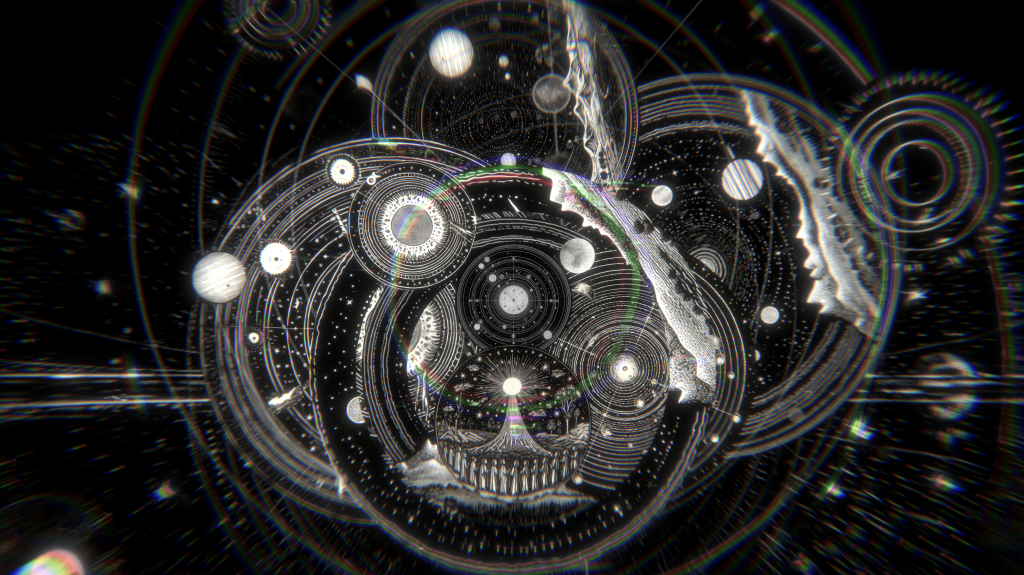
Possible worlds… is an augmented reality work developed by Oliver Sahli and Chris Salter that explores the 16th century philosopher Giordano Bruno’s proposition that the universe is infinite, animate and populated by innumerable other worlds. Using head-worn technology to blend the physical world with the computer world, the installation taps into the human fascination with creating meaning from patterns such as constellations of stars and planets.
Multiple visitors at a time wear head mounted displays, that allow the real physical environment to mix with animated visions of the cosmos beyond the physical space. At the beginning of the experience, the visitors are confronted with a ghostly apparition of Giordano Bruno created by motion capture that wanders through the observatory space speaking fragments of words from his 1540 treatise “On the Universe and Possible Worlds.” As the figure begins to vanish, the dome of the observatory is overlaid with a vast cosmological universe that the visitors then begin to travel through while lying on their backs. Speeding past stars and planets, asteroids and the still burning remnants of supernovas, the visitors eventually experience entering Gaia BH1, the closest dormant black hole to Earth which is only 1600 light years away but which suddenly becomes alive in the final moments of the work.
Exhibitions and showings:
Data Alchemy – Observing Patterns from Galileo to AI from June 9th to 24th 2023 at Collegium Helveticum, Semper-Sternwarte
NIFFF Invasion from 30th June to 8th July 2023 at the Neuchatel International Fantastic Film Festival.
REFRESH#5 on 9th November 2023 at the Immersive Arts Space
Luzifers Dream: An Immersive Concert
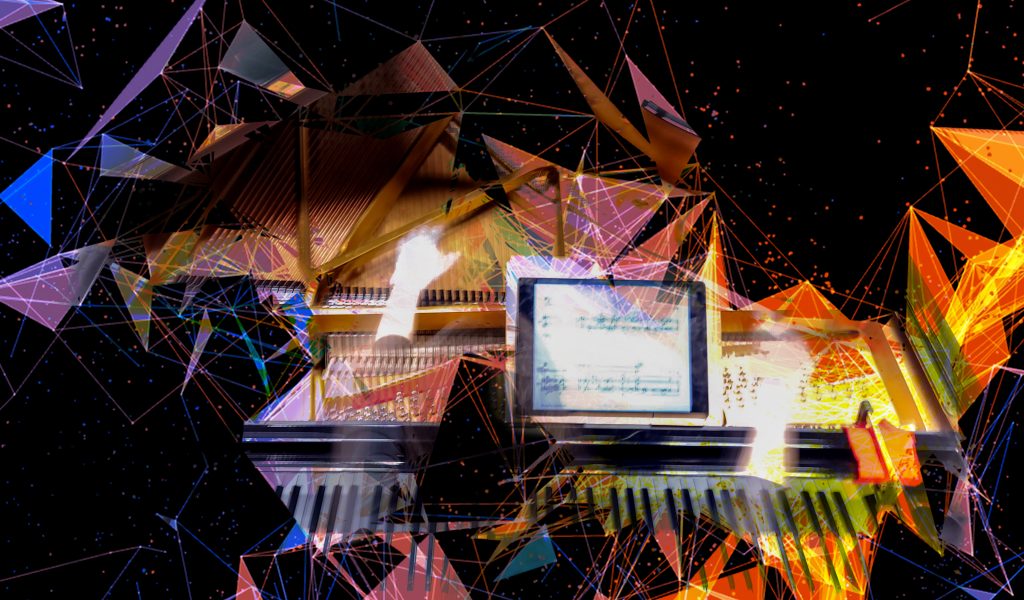
Work number 51 ½ for piano solo: Scene number 1 of the opera SAMSTAG (Saturday) from Stockhausen’s opera cycle LICHT (Light). Stockhausen`s first playing instruction: “The piano piece XIII should be performed like a magic spook”. Lucifer lies in a trance on a chair while the assistant Majella plays his dream on the piano.
A fever dream.
Lucifer is a drone. Every whistling, singing and tapping of the assistant on the piano is alienated. The Immersive Arts Space is immersed in animations choreographed by artificial intelligence. Concertgoers can move freely in the hall and listen to the various sound events. A game between man and machine, art and artificially generated values.
Performances took place on: 15th & 16th June 2023
Credits:
Piano : Arianna Congedi
Sound design, visuals: Jonas Renato Fuelmann
AI Programming : Yuchen Chang
Mentorship : Philippe Kocher
Musical supervision: Till Fellner
Dramaturgical advice: Annette Uhlen
Further support by : Kristina Jungic, Eric Larrieux, Martin Fröhlich, Marek Lamprecht, Paulina Zybinska, Antonella and Ruggero Congedi, Rama Gottfried, Federico Foderaro, Lara Wedekind, Mischa Cheung, Jean-Christophe Hannig, Hirschmann Foundation, Voice Technologies Switzerland.
